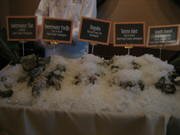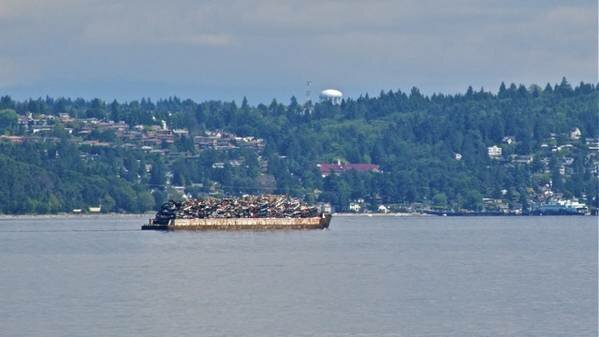Elliott's Oyster House is currently celebrating their 18th annual Ocean Harvest Festival, which culminates in the Oyster New Year Bash on November 6th. It looks to be completely over the top (oyster luge and most beautiful oyster contest, anyone?) in a delicious way, with thirty varieties of local oysters shucked to order, fifty wines and microbrews, and tons of other seafood to sample. Tickets are $95 per person, or $125 if you want to go VIP and hit the oysters (and champagne) early.
But first, tonight is the Slurp Up, a mini version of the New Year's party. There's still tons of briny, supple oysters on the half shell, as well as other seafood appetizers, wine, and beer. Those tickets will only run you $35 for all the shellfish you can eat.
The New York Times seems delighted to dispel any remaining myths about the untouched natural beauty of Washington state. Just this week readers have learned that there's three times the amount of plutonium waste at Hanford as "thought," and that the Puget Sound's pH level is declining in part due to ocean acidification and the water is growing more corrosive. (Thanks. We'll be expecting a make-up "36 Hours in Seattle," soon.)
The Seattle Times goes straight to the pH-decline bottom line: the impact on the Puget Sound shellfish industry.
The Taylor Shellfish hatchery on Hood Canal's Dabob Bay had its first good year in several in 2009, but company spokesman Bill Dewey said he suspects that's merely because the winds cooperated, preventing acidified seawater from entering the relatively stable bay.
The company recently installed sophisticated pH monitors at its hatchery to determine when it's best to draw water off the surface, from way down deep—or not at all.
In an earlier story, from January this year, the Seattle Times looked at the cause-and-effects of ocean acidification in general. The world's oceans act as a carbon dioxide sink, claiming excess CO2 from the atmosphere, but CO2 dissolved in water creates a weak acid solution. It turns out that shellfish larvae, for one, are very sensitive to changes in pH.
The new study on the Puget Sound's ocean-acidification intake represents the work of researchers with NOAA, the University of Washington, and the state's Department of Ecology. (It's published in the latest issue of Estuarine, Coastal and Shelf Science.) The researchers make it clear that the Sound is struggling mightily with the human activity around it--the toxic pollution and "nutrient-rich" flows that are channeled into it, both killing off life and promoting algae blooms that...also kill off life....
Seattle PostGlobe tipped us off to this Three Sheets Northwest story on the razor clam season opening tomorrow, October 16. The department of fish and wildlife has given the okay for digging on five Washington coast beaches. You need a license if you're over 15, and you're allowed to dig up 15 clams.
That's in contrast to northern Puget Sound, which the Seattle Times reports has a terrific case of "red tide" toxins. You don't want to chance it: "The department said Thursday that tests found so-called 'red tide' toxin levels up to 100 times the closure level." There's a table of open/closed shellfish beaches here.



Most Recent Comments